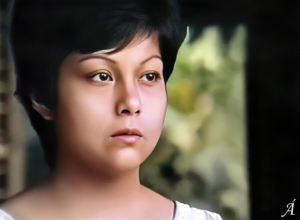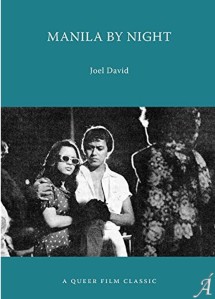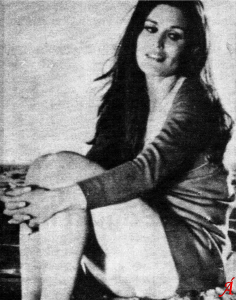In May 2001, via an introduction made by a professor, I was contacted by an editor at the British Film Institute’s Sight & Sound magazine. It opened with a “Sensitivity: Confidential” line but I guess that, since the results of that decade’s survey have been published and even succeeded by another decadal poll, and since no national security issue seems to be at stake, I could quote portions from the exchanges. “We are starting to compile a database of possible contributors to the [next year’s] poll…. I will send out a more thorough questionnaire, requesting your top ten once the project begins in earnest, as at this stage we are still trying to identify more key figures from around the world” (“Sight & Sound Top Ten Poll” email, May 22, 2001). It also requested for more possible Filipino contacts but the person later said that she could only get in touch with one of them, so in effect – since 1992 contributor Agustin Sotto had just passed away – there were only two 2002 contributors from the Philippines. (Speaking of national security, one of my later messages, sent a week after the 9/11 terrorist incident, started with “Relieved to report that I’ve lived through the attacks on lower Manhattan, thanks to my holing up in Brooklyn [which I used to think made me less fortunate]” [“Filipino critics’ availability” email, Sept. 18, 2001]; I seem to have lost the message that precipitated this response.)
11011On Valentine’s Day the next year, the formal invitation came, from another sender: “As you may know, every ten years since 1952, Sight & Sound magazine has published a ‘Top Ten’ list of films based on an extensive poll conducted among the world’s most respected film critics. Over the decades this has become an important gauge of film opinion” (“Sight & Sound Top Ten” email, Feb. 14, 2002). Since I’d done canon exercises for Philippine cinema, and completed graduate-level course work in film, I figured I’d participate just this once, as I would for all the other canon projects I ever got involved in. I prefaced my list with a short paragraph that included, “I have been maintaining a personal canon for the past few years. I find it has not changed much since I first drew it up, so here are the films” (“Re: Sight & Sound Top Ten” email, Feb. 15, 2002).
11011Ten days later I got a response that said: “Following initial responses to the Top Ten poll we would like to offer some clarification to the list that we are asking you to submit. As with the previous polls, we would like you to choose the ‘best’ films in cinema history rather than your own personal favourites. Also the poll should be limited to feature films excluding shorts” (“Sight & Sound Top Ten Poll Clarification” email, Feb. 25, 2002). This could have been a standard message sent out to some, or all, respondents, but I had no way of finding out for sure. Just in case it was directed to only me, I gave out a response that went, in part:
I was surprised to read that the poll is now being confined to feature films – I recall stumbling across several short films (mostly from the silent period) and non-feature titles in the breakdown of individual votes during past surveys. As an example, I had included Michael Snow’s La region centrale, which is of full-length duration, since I remembered the same filmmaker’s Wavelength being listed in 1992 & I found the title I listed more accomplished. I did leave out the ground-zero footage of the aftermath of the nuking of Hiroshima – the most powerful strips of celluloid I’ve ever seen (dramatically enhanced by my having been in the city during the screening), but too fragmented to serve a sustained unitary purpose. Finally, bodies of work by certain auteurs hold up better than some of these choices – Kenji Mizoguchi’s, Su Friedrich’s, Ann Hui’s, Georges Franju’s, Louis Feuillade’s, David Cronenberg’s, etc. – but none of their individual projects stands out the way the movies in my list do.
11011I do not get how anyone’s list of historically best films could exclude some personal favorites. In fact I would be suspicious of anyone who admits that her or his list of “best” titles does not contain any favorites. I have seen the “best” films in cinema history, as you put it, proceeding from the Sight & Sound and other canons through the years. I have always made an effort to watch these titles traditionally – projected onscreen in a darkened auditorium, with other audience members present. I have been attending screenings since the ’60s (I remember dreaming of a now-lost Filipino fantasy film in ’66), watched my first unaccompanied commercial screening in ’72, and took to serious and extensive film coverage (i.e., whatever may fall under canonical considerations, however remotely) in ’78. I point this out just in case your apprehension proceeds from the reasonable suspicion that my choice of titles has been idiosyncratic. It has not been so, except possibly in relation to some pre-existing standards that I cannot adhere to, inasmuch as my concern is genuinely what’s best, within and beyond questions of good taste and moral rectitude. I assure you that if the list I submitted comprised my personal favorites, it would be completely different except for maybe a couple of films.
11011So are American porn films better than Citizen Kane? Almost all of them aren’t, even by the most liberal standards, but a significant handful are, and so are a number of other entries, including a Bollywood release, a questionably motivated documentary, an American B-movie, and La regle du jeu. I doubt if Welles’ outpouring deserves to show up even in a top-20 ranking, and if your publication persists in this project then justice may ultimately stand a chance of being served. Have my several screenings of Kane diluted my appreciation of it? No, I found it already too whiny-white-guy precious the very first time I saw it, 20-odd years ago. Have I subjected the other “best” in my list to the same degree of multiple screenings? Yes, some more than others. Am I indulging in parochialism by listing something from my national cinema? Only if American critics are being parochial in listing the insufferable Citizen Kane. Is “history” frowning on my choices? I must leave this aspect of your clarification unanswered – it’s simply too scary to contemplate, if you were in my situation.
11011In the list below I have replaced the Snow film with something else. I have retained the documentaries, since I honestly believe feature filmmaking would not have been able to prosper this impressively were it not for the nonfiction tradition. However, if for any reason you wind up including an “experimental” non-feature/non-docu in someone else’s list, please do me the favor of restoring La region centrale. (“Re: Sight & Sound Top Ten Poll Clarification” email, Feb. 26, 2002)
11011The movie that I substituted La region centrale with was Michael Ninn’s 1995 film Latex. If the editors had acceded to this change my final published list would have included three porn films, since I’d already listed Henry Paris’s 1972 The Opening of Misty Beethoven and Gerard Damiano’s The Devil in Miss Jones (hereafter DMJ). But in fact even without Latex, I’d originally listed more than two because I specified the 1972-93 “The Devil in Miss Jones film series” (with Henri Pachard and Gregory Dark doing the second and third installments), in the same spirit of people listing Francis Ford Coppola’s The Godfather (1972) and The Godfather Part II (1974) as one entry.
11011In any case, Sight & Sound published the original list I submitted (minus the succeeding “series” films in DMJ) and excerpted sections from the third paragraph of the email quoted above. The print edition wound up placing my entry right above an appreciation of Citizen Kane, the very movie I had bashed. In 2012 Kane was dislodged after a forty-year run as the magazine’s all-time best film – in all likelihood a development that would have occurred sooner or later, to which my outburst was incidental.
11011Here was the original submission I handed in:
- Saló, o le centoventi giornate di Sodoma (Pier Paolo Pasolini, Italy ’75)
- Manila by Night (Ishmael Bernal, Philippines ’80)
- Khalnayak (Subhash Ghai, India ’93)
- The Opening of Misty Beethoven (Henry Paris, US ’76)
- La hora de los hornos: Notas y testimónios sobre el neocolonialismo, la violencia y la liberación (Octavio Getino & Fernando E. Solanas, Argentina ’68)
- La regle du jeu (Jean Renoir, France ’39)
- God Told Me To (Larry Cohen, US ’75)
- La region centrale (Michael Snow, Canada ’71)
- Olympia (Leni Riefenstahl, Germany ’38)
- The Devil in Miss Jones film series (Gerard Damiano / Henri Pachard / Gregory Dark, US ’72-93
11011Apart from dropping the sequels of DMJ, Sight & Sound also adjusted the other entries to conform to what appeared to be the magazine’s style standard, strangely appending the censors-imposed title of City after Dark to Manila by Night. Several of the media coverage (see these ones from Slate and The Guardian), not to mention a number of blogs and discussion boards (notably this one from the ILXor server), made references to my list, specifically the inclusion of Misty Beethoven (attributed by Sight & Sound to Randy Metzger, Henry Paris’s real name), probably because I listed it ahead of DMJ. In fact in the comprehensive tally of film titles, another Damiano film, Deep Throat (1972), also showed up; and in contravention of the Sight & Sound email admonition, so did an anything-but-full length film, the advertising entry Surprise, Surprise (credited to British Airways). And as far as I could tell, none of the 2012 respondents listed a hard-core entry, aside from Nagisa Oshima’s Ai no corrida (1976), listed as In the Realm of the Senses.
11011Several other individuals selected La regle du jeu, but not enough to enable it to reach the still-too-low number-two status that it held for the past several decades. Saló was tallied along with two other voters, both filmmakers (Catherine Breillat and Michael Haneke), while La region centrale was also selected by another critic, Tom Gunning; the rest were listed by no other respondent.
11011A few individuals managed to track me down via my then-active University of the Philippines email address, generally wanting to know how I came up with my list; I answered each message as earnestly and comprehensively as I could, but it never led to an exchange, because how could it? What’s there to explain beyond the basic insight that to fully appreciate a medium one should begin with what it has to offer, rather than with one’s personal baggage – or rather, in my case, that one has to adjust one’s baggage to accommodate whatever’s available out there?
Á!














 ORCID ID
ORCID ID 